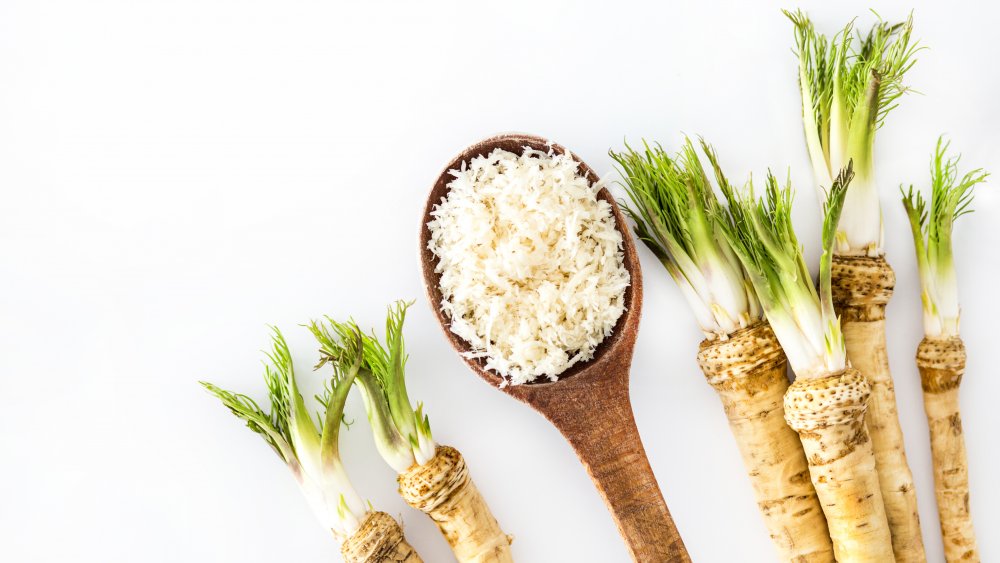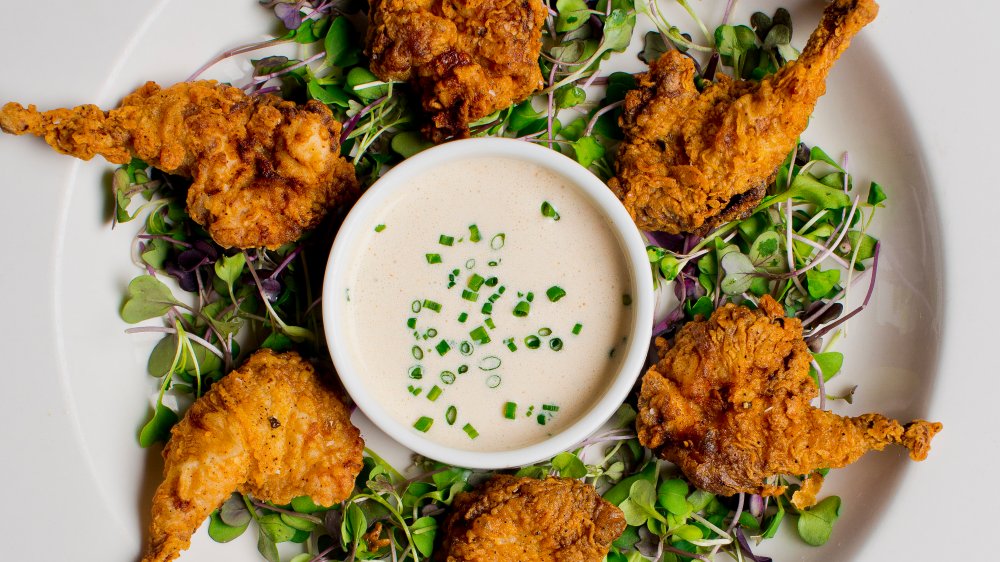What Is Horseradish And What Does It Taste Like?
Have you ever ordered prime rib and had your mouth catch fire when you took a bite of the mystery white sauce that accompanied it? Surprise! That was horseradish. A member of the Brassica family, which makes it related to broccoli, cabbage, mustard, and wasabi, according to Taste of Home, horseradish is actually the root of a plant and gives off no smell until you cut into it. The spiciness from horseradish dissipates quickly, like wasabi, which is why the majority of sushi restaurants can save money by adding green food coloring to horseradish and no one's the wiser (via Make Sushi).
A tablespoon of horseradish contains 44 milligrams of potassium and just six calories, according to the Horseradish Information Council. The council explains that the "hotness" of horseradish stems from a volatile compound called isothiocyanate inside the plant. When the compound hits air or saliva, the magic happens. Vinegar is traditionally used to slow down or stop the reaction, helping to stabilize the flavor of horseradish.
How to use horseradish
Horseradish is a readily available, packaged condiment in most retail stores, but if you'd like to try making your own, it's actually pretty easy. According to Taste of Home, you can pick up a horseradish root at the store and peel and cube it. Add it to your blender with 3/4 cup vinegar, two teaspoons sugar, and1/4 teaspoon salt. Blend until pureed. When you remove the blender lid, don't look directly into the blender if you want to keep your eyebrows (kidding, of course, but the mixture will release some spicy vapors). Store the mixture in the refrigerator, in a sealed container, for later use.
Once you have the horseradish made, what can you eat with your horseradish, besides prime rib, and possibly sushi? How about BLT's with horseradish mayo, Bloody Marys, shrimp cocktail, or pork shoulder with horseradish-mustard sauce (via Bon Appetit)? Add it to anything that deserves a spicy kick.

